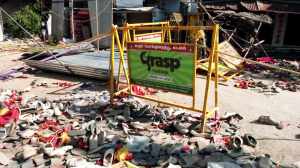Core industries do badly; Survey asks govt to incentivise funding
The verdict is out. Key industrial and infrastructure indicators that have been showing a consistent downward slide over the last few months...

The verdict is out. Key industrial and infrastructure indicators that have been showing a consistent downward slide over the last few months have succeeded in bringing down the overall growth rate of the sector in 2007-08, reveals the Economic Survey released today. The power generation space, railway freight movement, as also production of steel, cement and petroleum have all shown a subdued performance in the current fiscal, with the port and air cargo segments being the only exceptions to slow growth.
Electricity generation by power utilities during 2007-08, which was targeted to go up by 7.2 per cent to 710 bn KWh, managed to clock a slower 6.6 per cent growth up to December 2007. It had grown by 7.5 per cent in the same period last year.
Similarly the railways, which declared a Rs 25,000 crore surplus this year, also disappointed when it came to freight movement. During April-Nov 2007, the total revenue earning freight traffic grew at 8.2 per cent compared to 9.2 per cent during the same period last year. The road sector, which has been on a virtual standstill on key projects like the Golden Quadrilateral in the past year, also performed below expectations.
The production of universal intermediates like steel, cement and petroleum, too, witnessed a distinctly weaker performance. Steel grew by 6.4 per cent, versus 11.1 per cent growth last year, while cement decelerated from 10.5 per cent to 7 per cent this year.
“Despite efforts to accelerate the pace of infrastructure development, the demand for infrastructure services have grown even faster than the supply so that the constraints may have become more binding,” the economic survey notes.
Ports and air cargo were the only segments that managed to surge forward this year. Up to October 2007, the cargo handled by major ports registered a growth of 13.9 per cent against 9.5 per cent in the corresponding seven months of 2006-07.
But while air cargo space grew faster compared to last year, air passenger has surprisingly shown a weaker growth, despite a surge in passengers resorting to airlines for domestic travel.
The weak infrastructure growth has prompted the Economic Survey to recommend that the government incentivise fund mobilisation and bring comprehensive but simple policy regulations for a sector that requires Rs 20 trillion worth of investments.
While experts agree that there has been a definite slowdown in infrastructure development, they say the survey does not provide any macro-indicator for the sector. “While the government and Planning Commission have agreed to focus on Gross Capital Formation in Infrastructure (GCFI) as a new macro-economic indicator for the sector, there is absolutely no mention of it anywhere in the survey,” said Vinayak Chatterjee, co-chairman of the Confederation of Indian Industry’s (CII) national council on infrastructure.
“Infrastructure is about the creation of new capital stock and we need a thermometer to gauge that. The government, which was to have brought in this indicator in the 11th plan, should have released the figure in the first year of the plan.”





- 01
- 02
- 03
- 04
- 05


























